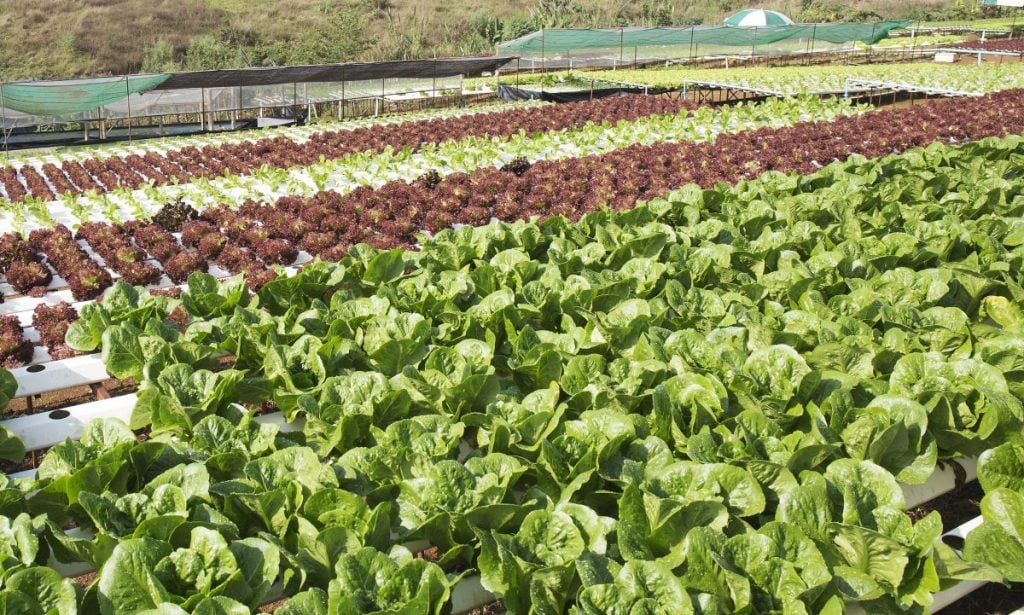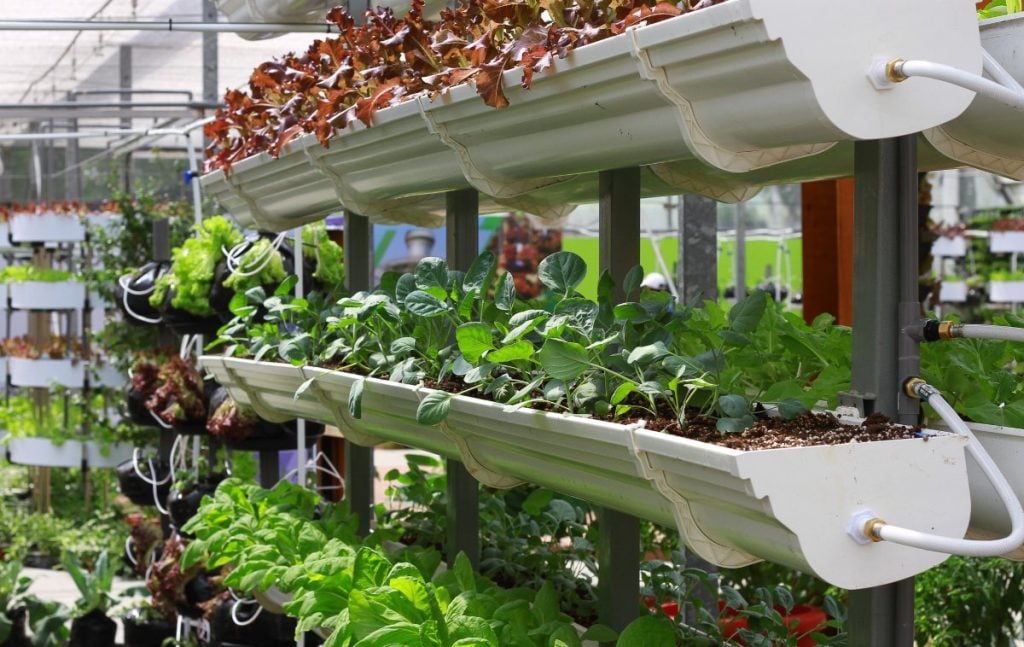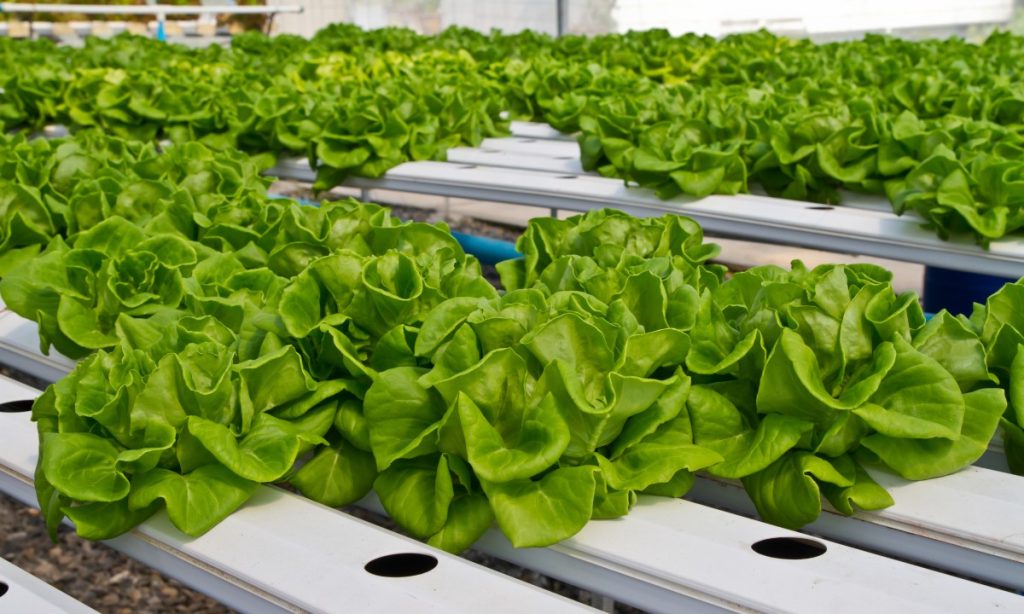If you’re looking to make some extra money, growing plants in a hydroponic system may be the perfect solution for you.
Let’s explore how this special type of growing works, and why you may want to invest in it.

What is Hydroponic Growing?
Hydroponic growing is a technique that uses water, nutrients and light to grow plants without the use of soil.
It’s a profitable way to get your own locally grown food with minimum use of water, fertilizers and pesticides.
It also reduces crop loss due to pests and disease, which are common issues when using traditional farming methods.
And best of all, anyone can set up a basic hydroponics system in their backyard or basement and get started right away!
With hydroponic growing, you can grow plants year-round, in any climate, at any time of year. And because there’s no dirt involved, it’s much easier to clean than a gardening plot!
By growing plants in a hydroponic system, you can get the same or better yields as you would with a more traditional garden.
Hydroponic systems use mineral nutrient solutions to deliver water and nutrients directly to the plant roots without the need for any soil.
They are more efficient than conventional agriculture as they use 10% of the water and 90% less land.
They can also be used indoors which allows farmers to produce crops all year round regardless of the weather.
They can also grow in inhospitable climates such as deserts which would not be suitable for traditional farming.
Hydroponic growing is an excellent alternative to outdoor farming because it allows farmers to produce more food in less space.
Hydroponic systems require more electricity than soil-based systems, and some crops are more sensitive to nutrient deficiencies than others.

Before you decide to set up a hydroponic system, it’s important to do some research to find out what works best for your particular plant.
This will ensure that you get the highest possible yield from your crops while minimizing the risk of damaging your crops with insufficient fertilizer or excessive lighting.
Hydroponic systems are relatively inexpensive to set up, but you’ll need to buy a pump, grow medium, light/heat source and nutrient solution to get started.
Some hydroponic systems, such as NFT, DWC, and ebb and flow, require the use of pumps to move the water and nutrients around the grow chamber.
These systems are also more expensive than gravity-fed systems because you must purchase the pump and the grow medium separately instead of getting everything you need in one package.
Gravity-fed systems only require you to place the grow medium in a tray on top of the water reservoir and use a water pump to circulate the water through the grow media so that your plants can be fed nutrient solution.
This system is less expensive to install than a pump-driven system and is much less likely to run into problems with malfunction.
It’s a good idea to experiment with different types of hydroponic systems to determine which one is right for you.

What Crops Can You Grow Hydroponically?
Hydroponic growing systems can be used for growing food, flowers and plants for medicinal purposes.
Commonly-grown hydroponic crops include :
- Lettuce and other leafy greens
- Garlic
- Peppers
- Herbs
- Fruits like strawberries and raspberries
- Tomatoes
- Beans and peas
- Cucumbers
- Carrots
- Various types of flowers
- Coffee beans
- Hemp seeds
- Wheatgrass
- Cotton (for clothing)
- Soybeans
- Mushrooms
The list goes on! The reality is that the majority of crops you can think of can grow hydroponically.
That said, you’ll want to avoid trying to grow most root vegetables — like potatoes, carrots, beets, turnips, radishes, and parsnips — hydroponically because root vegetables need to be grown in soil.
Root vegetables also require a lot of fertilizer and water to grow well, which can make it very expensive to grow them in hydroponics.

How Much Money Can You Make Growing Hydroponically?
Depending on the type of plants and nutrients used, it can be easy to make $500-$1000 a year from hydroponically growing plants on a small scale.
You can start with a small project to test the waters and see if the economics of hydroponics are right for you.
For example, hydroponic systems used in urban farms can produce an average of $21.15 per square foot, which can add up pretty quickly if you’re able to grow your vegetables efficiently.
Start by assessing how much space you have available and how much yield you want to produce.
This will give you a good idea of the type of system and setup you’ll need to create.
Hydroponic systems can be expensive to set up, so it’s important to do some calculations beforehand to see whether or not it’s worth it.
You’ll also want to take steps to maximize your profits.
For example, if you can use the surplus vegetable waste from a local restaurant as a source of nutrients, that will reduce your costs.
Another way to increase your profitability is to buy more effectively. This means using minimal quantities of chemicals and avoiding anything that could harm your plants.
Some organic products may be more expensive but will reduce your overall costs in the long term.
It’s also worth reviewing your supplier base regularly and seeing if you can buy the same raw materials more cheaply or efficiently.
You can also maximize your return on investment by growing a crop that has a high market demand in your area.
This allows you to sell your produce to local restaurants or markets at a price that’s high enough to cover the cost of your inputs and earn a profit.
Final Thoughts
For most farmers, hydroponics may be a preferable alternative to conventional methods of farming.
With proper planning, hydroponics can enable farmers to produce plants at a low cost, which can result in higher profits.
To learn more about growing crops for profit, visit our Homesteading Hub.
